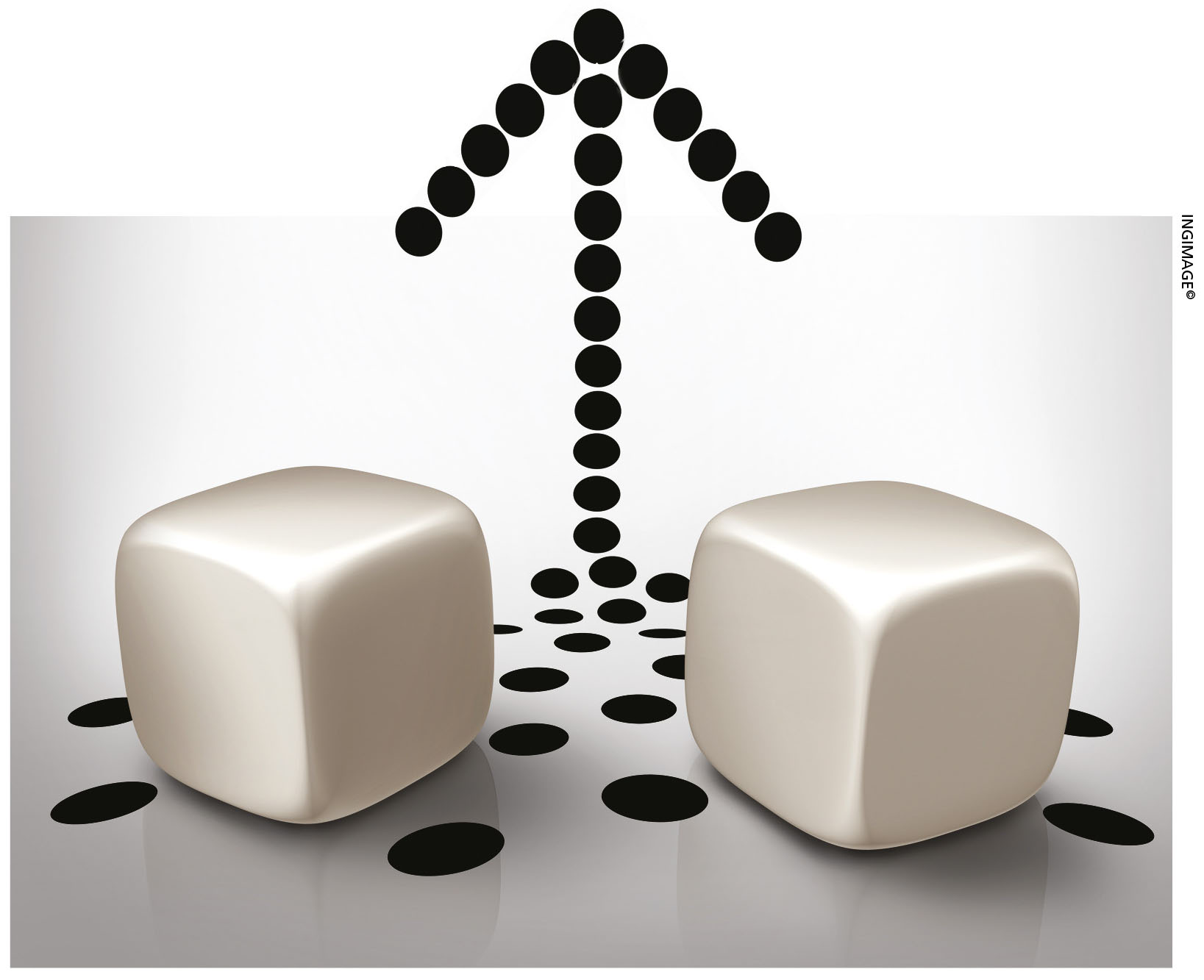RISK TAKING
THINKING OUTSIDE THE BOX
Nicola Walsh writes that creativity shouldn’t be limited by the fear of failure
You can’t be creative without taking a risk from time to time. When producing something new, unusual and innovative, there’s always the chance of failure because the creation doesn’t produce the intended results every time. Risk taking and creativity are interdependent; they can’t exist without each other.
As children, we take risks, learn through mistakes, solve maths problems and make new friends. Children explore fantasy worlds, interacting freely with one another through stories and roleplays, building imaginary landscapes, and constructing and reconstructing them.
Those who are brought up in trusted environments knowing that they can experiment, and make mistakes without fear of failure, will feel free to explore.
Once as a young mother, I took my children to an art exhibition. Whilst walking around and looking at the artwork by an established artist, my three-year-old son – who was within earshot of the artist – commented loudly: “They’re not as good as mine are they, Mummy?”
My son was not unusual. Children are wonderfully egocentric, and believe fully in the validity and usefulness of their own creations. In contrast, as adults many if not most of us become more self-aware and conscious of our mistakes, and how they may be perceived by others. We lose the ability to take risks for fear of failure when we abide by the rules and compare our creative efforts against the work of others.
It’s rare for an adult to believe fully in the validity and usefulness of his or her own creations – a fact that other adults would label as ‘arrogance.’ And as a result, our creativity declines. Through fear of failure and the need to conform, we embed these unspoken rules in our own children.
Whilst working to develop language skills in nursery students at an English medium preschool in a remote area in Sri Lanka, I strongly advocated the use of roleplays. The teachers were easily convinced, and worked hard to construct an outdoor petrol shed with cardboard boxes and used tyres.
However, when they were presented with the petrol shed play area, the students didn’t play. They observed politely because the unspoken rule of the school was for lessons rather than play and this had been instilled in them from an early age.
Therefore, we had a situation where the teachers were breaking the rules and taking risks while the students didn’t know what to do. School was a place to work and abide by the rules rather than play.
So the teachers took the initiative: they became role models and played. This encouraged a few girls who started to play at the desk, pumping imaginary petrol and writing bills. Gradually, the boys joined in by taking the cardboard cars to the pumps, and speaking in their mother tongue and English.
Initially, the play was reserved and stilted but the young students soon overcame their fears to play in school, and both English and their mother tongue flourished.
Having the confidence to act independently, try new ideas and not be frightened of failure is an important skill that we lose with age. Placing adults in imaginary worlds enables them to empathise with others as when children dress up as firefighters, and imagine what it feels like to speak and act as such. Airline engineers pretended to sleep in a confined space before designing new sleeping areas.
To be creative, you need to be able to explore the possibilities, look beyond what everybody else is doing and be imaginative – not only acting but also constructing prototypes, thinking with your hands, and making and remaking the models.
Many new designs have been created using paper clips, sticky tape and film canisters. Furniture designer Ray Eames discovered the endless opportunities that plywood could be put to by exploring designs that went beyond the norm.
The roll-on deodorant eventually became the computer mouse. One of the first prototypes created by Jim Yurchenco for the Apple mouse was made with the ball from a roll-on deodorant stick and a butter dish. He explained that all the prototype had to do was illustrate a principle.
As Mark Zuckerberg once said, “the biggest risk is not taking any.” If we don’t take risks because we’re afraid to make a mistake, we’ll never learn. We need to shock people out of normal thinking. Poverty, lack of resources and desperation force people to become divergent thinkers – indeed, people who have the most creative ideas are often the most desperate.
If we can retain some of the free thinking, risk taking and egocentric characteristics we have as children, and begin to explore possibilities, here’s a chance that creativity will remain with us and guarantee our survival.
Our survival depends on being imaginative, asking questions and never being afraid to fail. So keep thinking outside the box!





